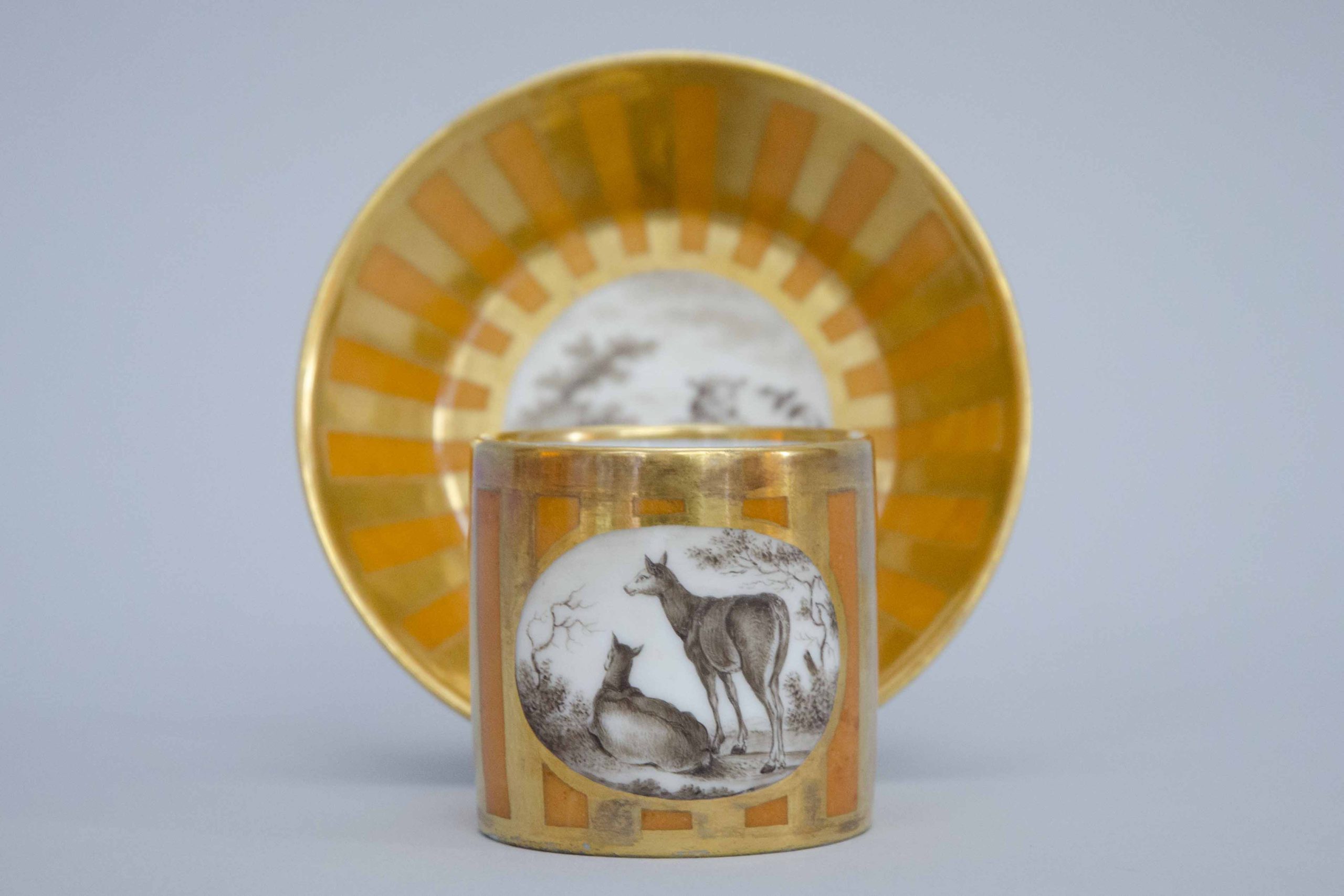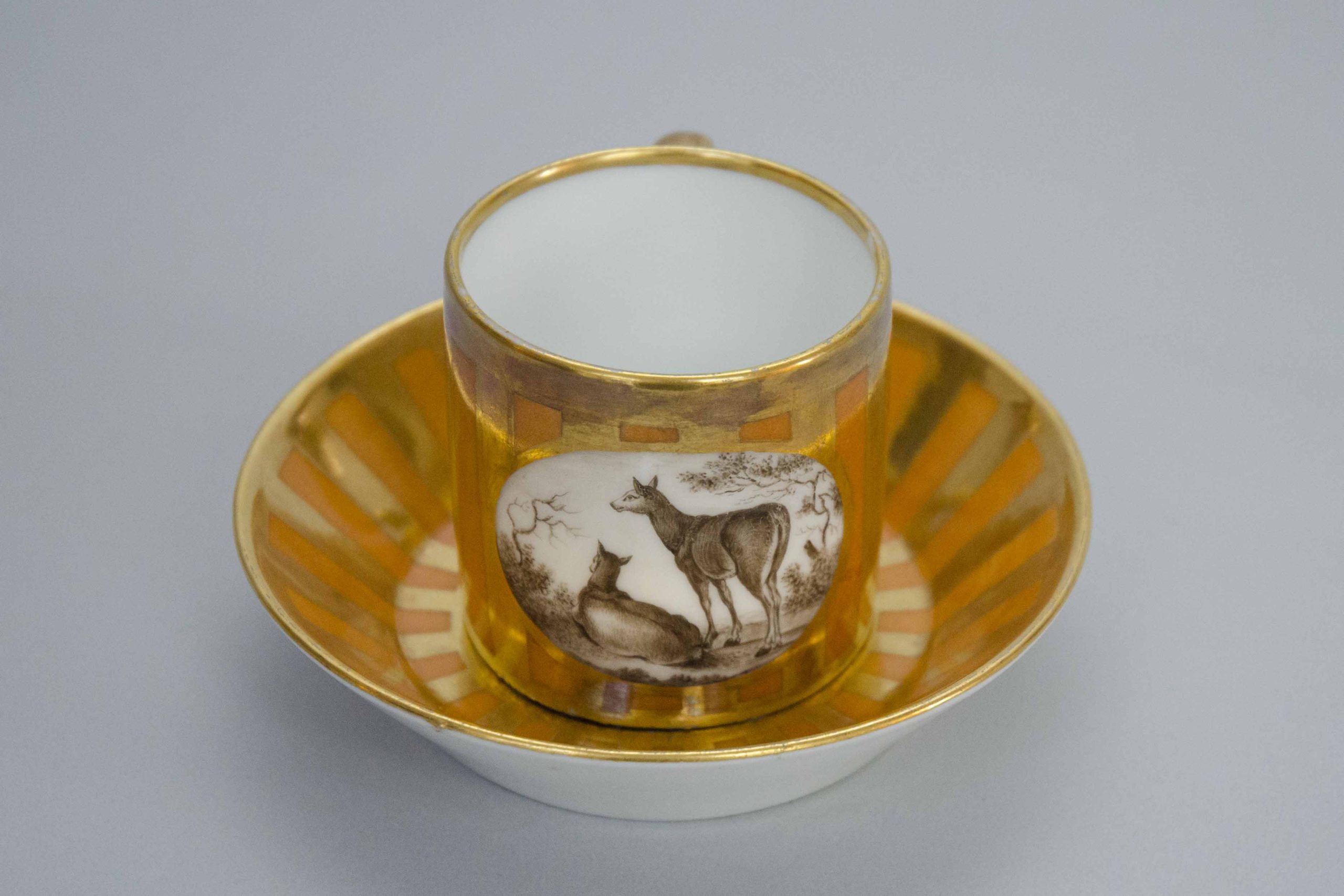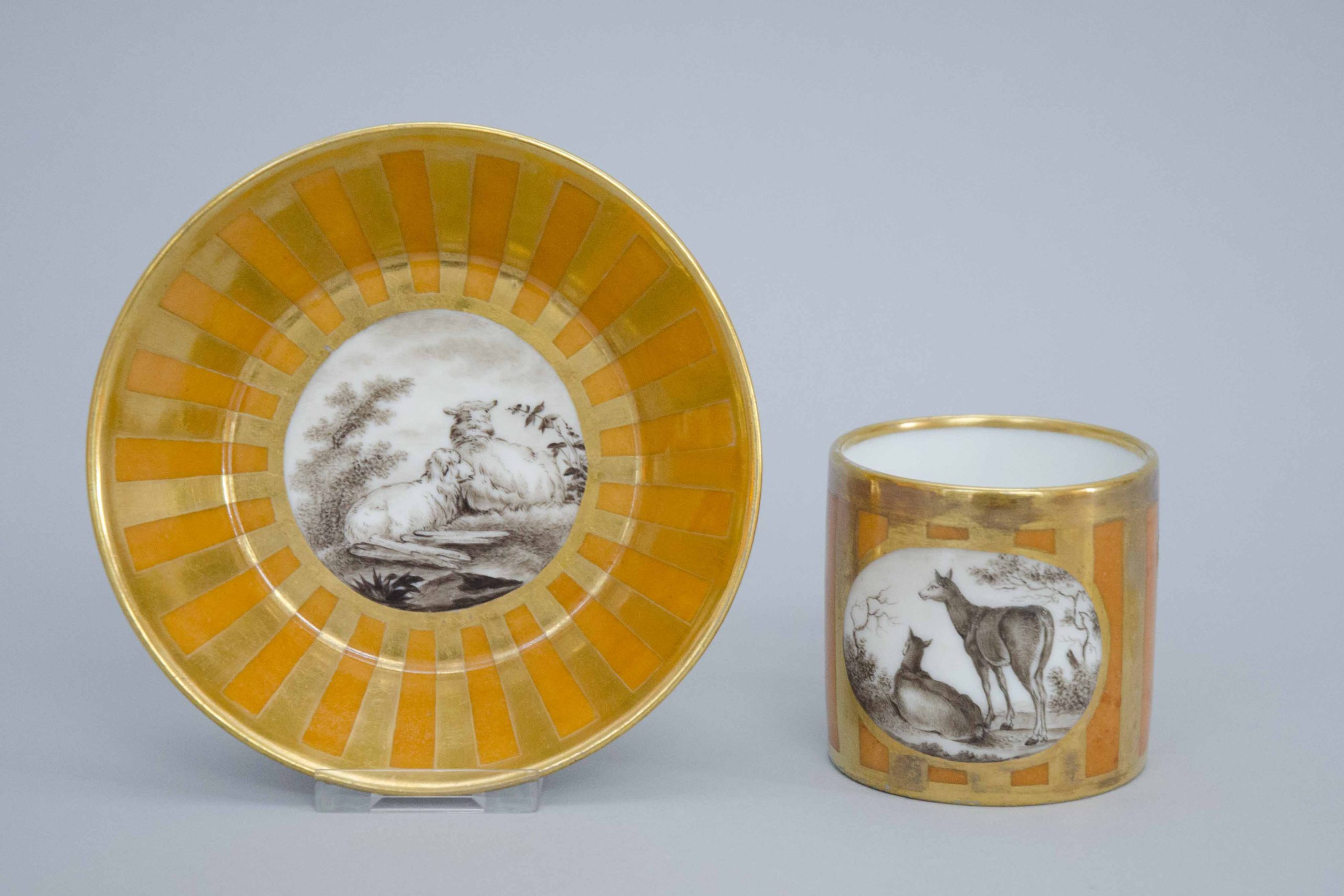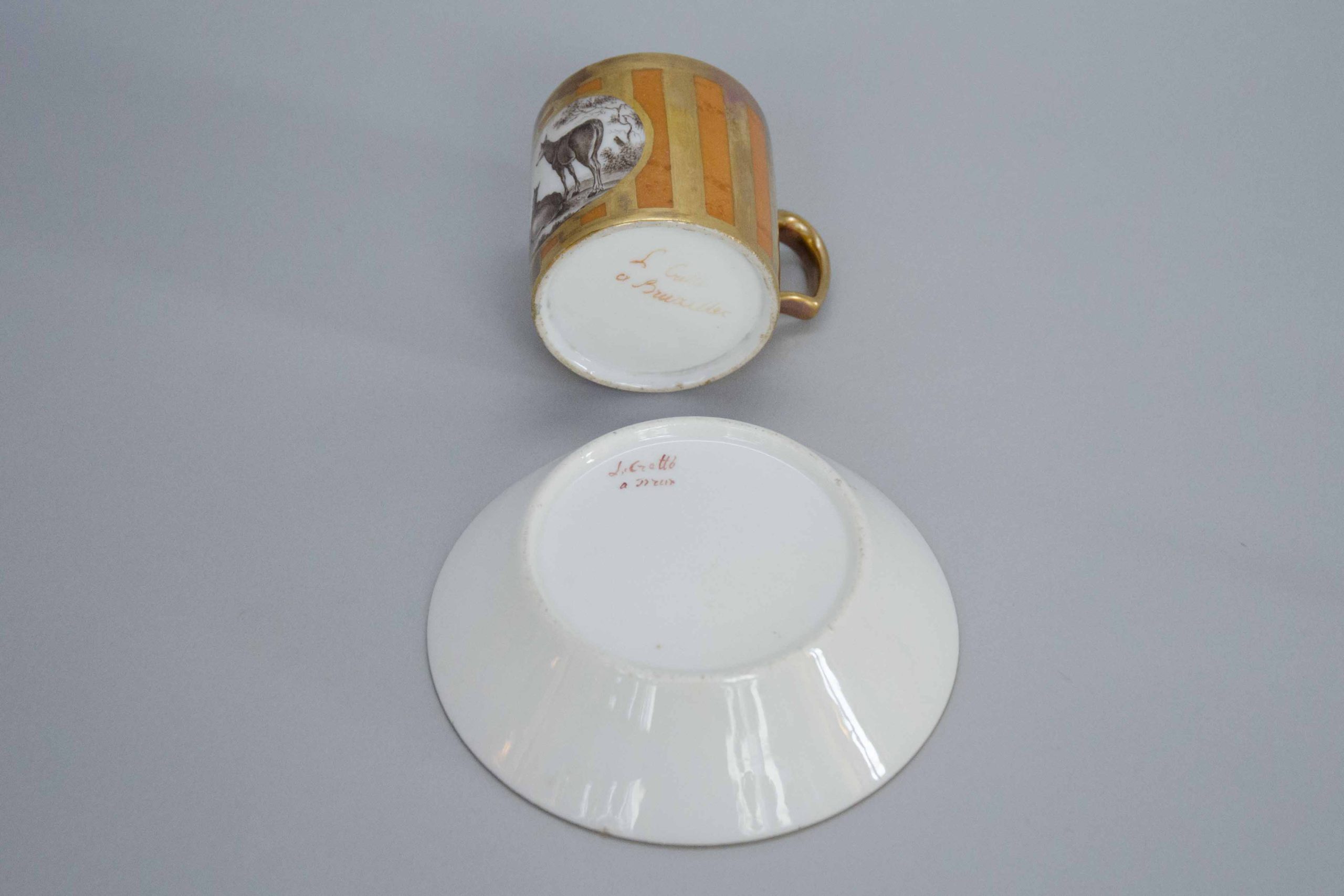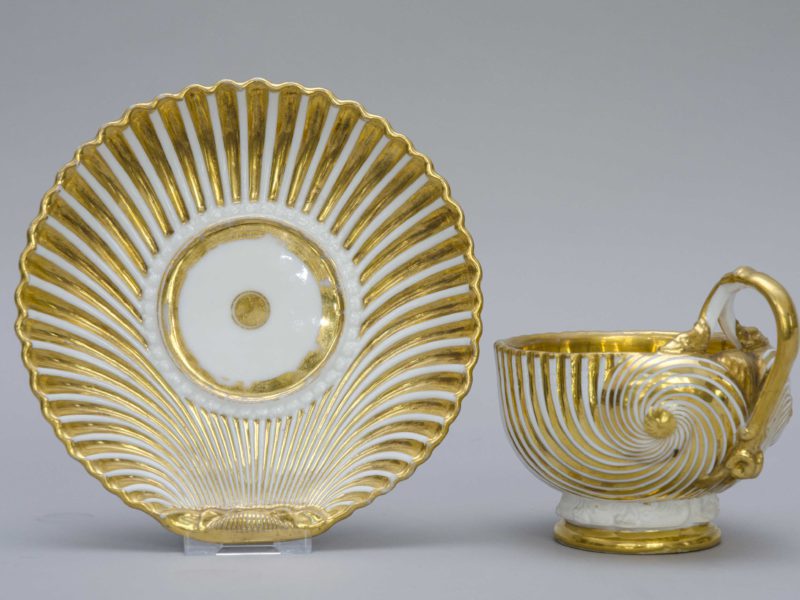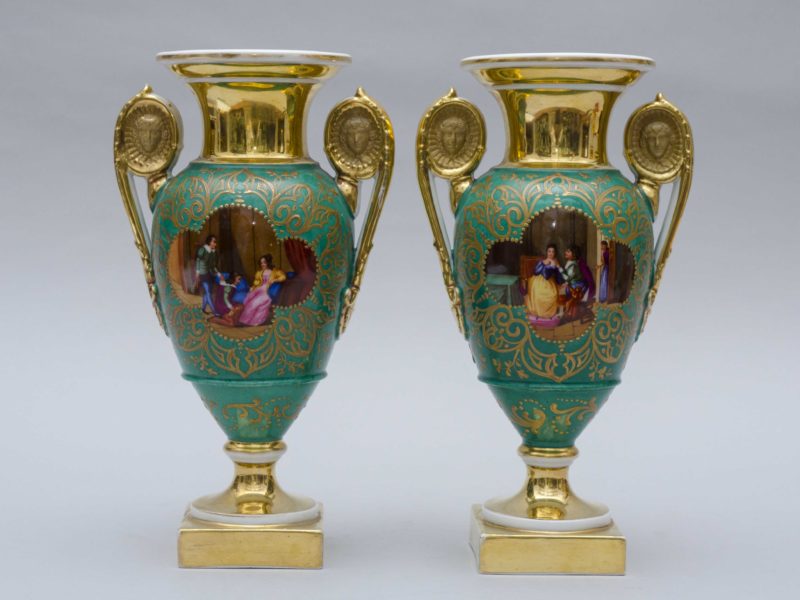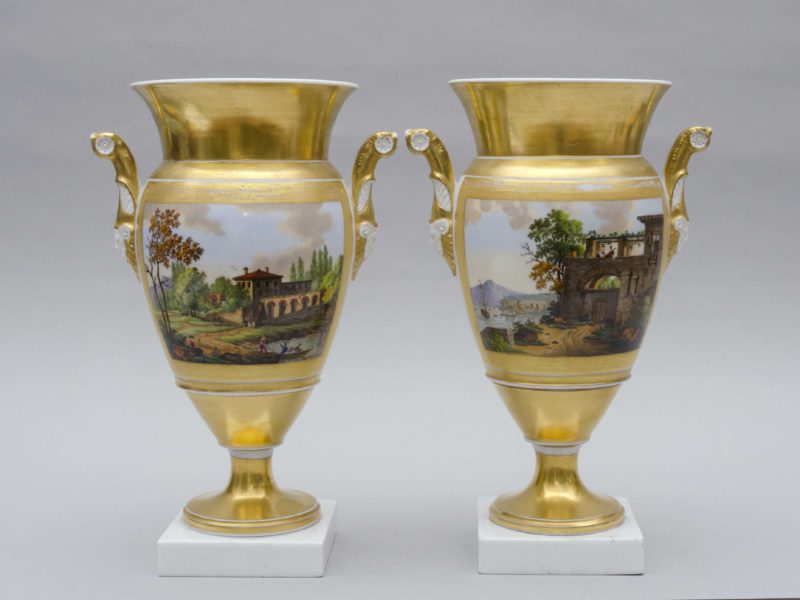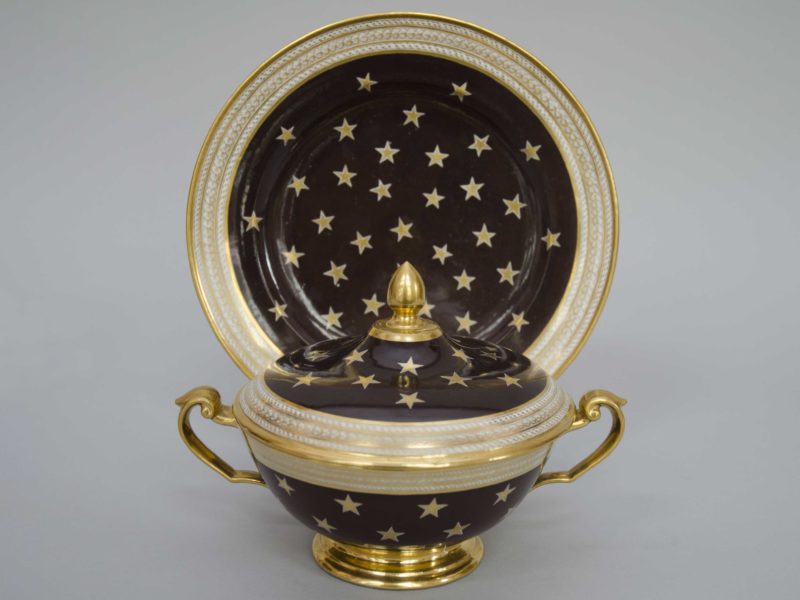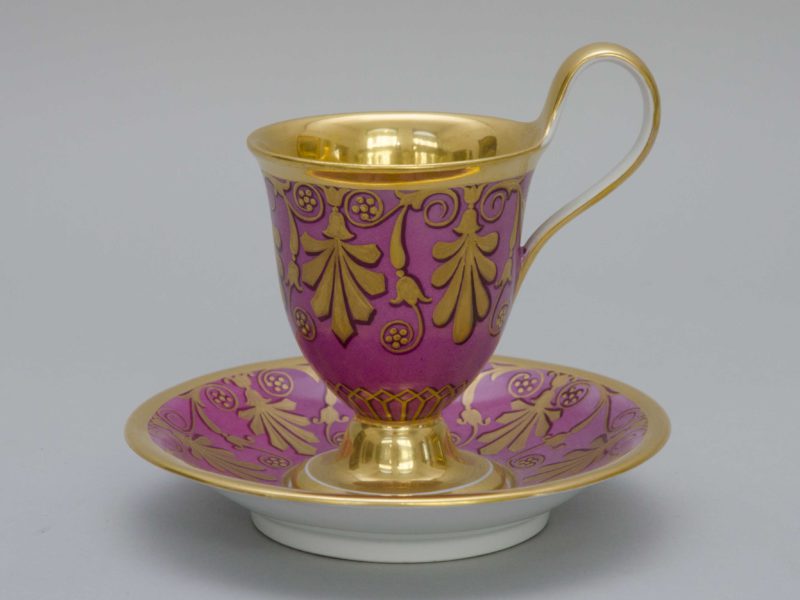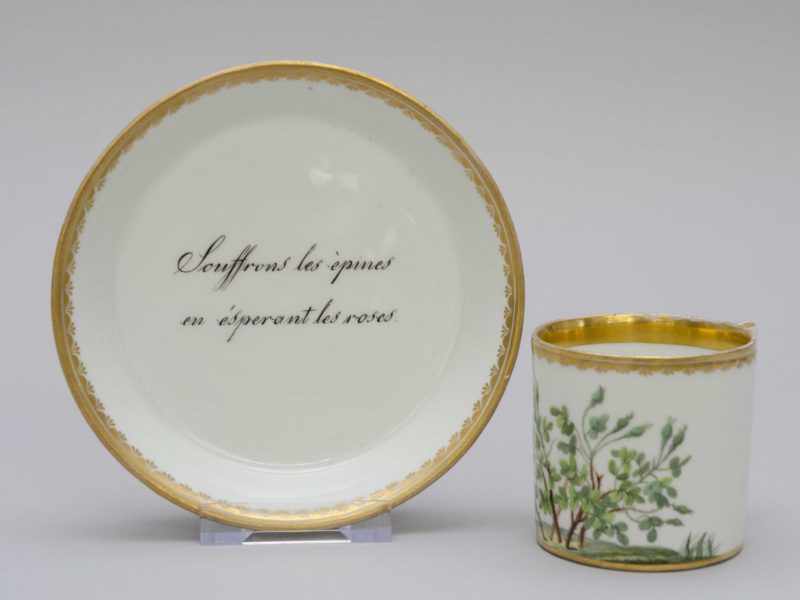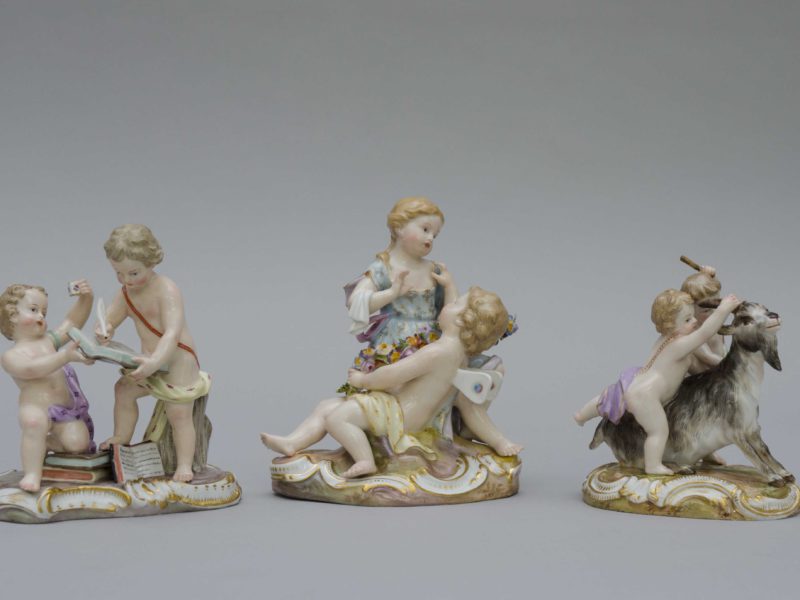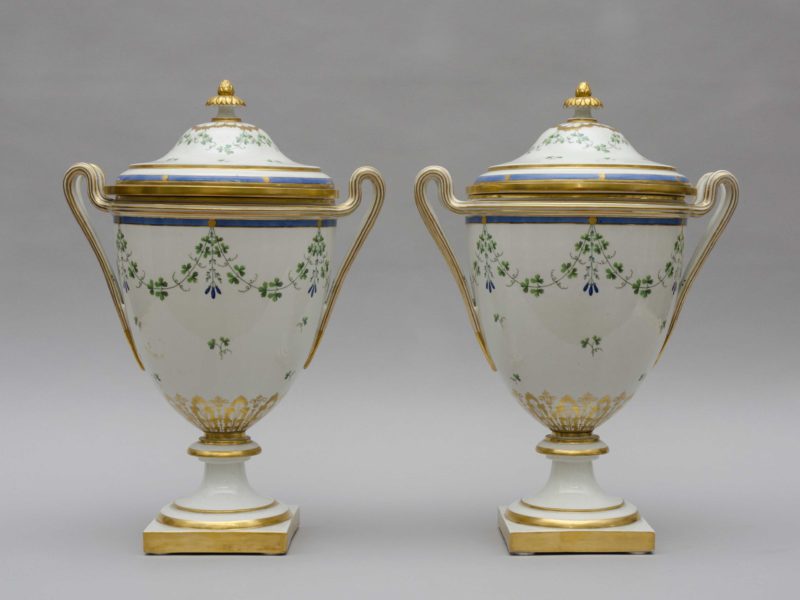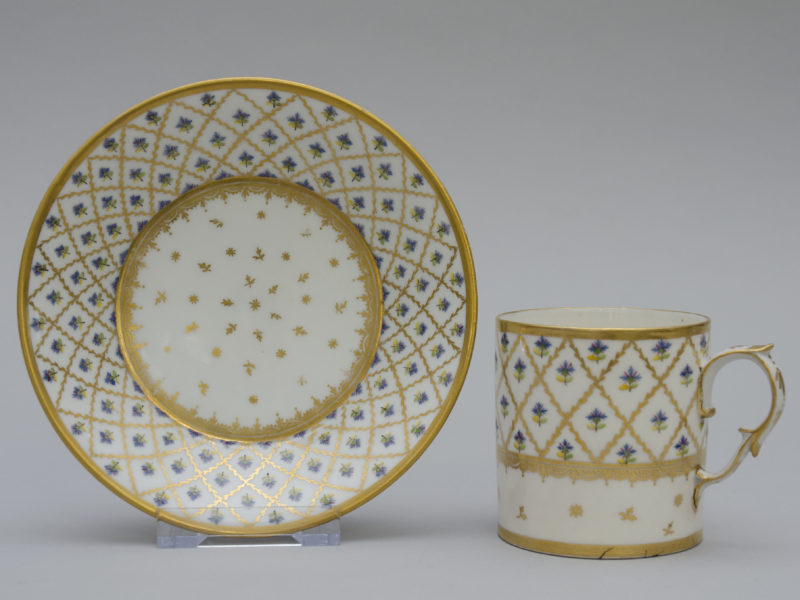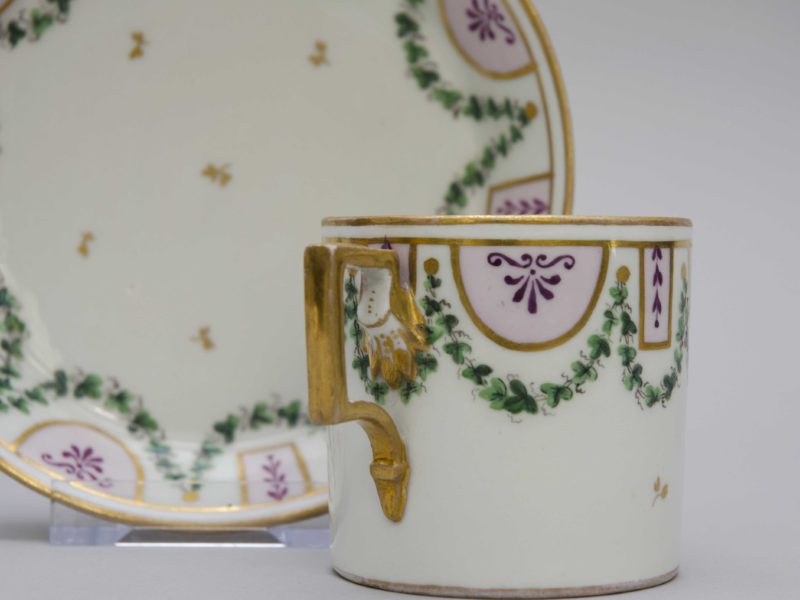Litron cup and saucer, Louis Cretté Brussels
Out of stock
Beautiful litron shaped cup with matching saucer. Decorated with cartouches of animals evolving in a landscape in grisaille. Orange ground with large gold stripes. An overall quiet modern style. The paintings are typical for Cretté. Signed in red on the glaze on the cup and the saucer. Great condition.
From the period when Cretté had his workshop in rue d’Arenberg, between 1788 and 1799, or his manufactory rue de l’Etoile from 1799 until 1813.
Lit: Louis Cretté began his career as a porcelain painter in 1772 at the Bourg-la-Reine factory in the Paris region. He will also work in the prestigious manufactures of the Count of Artois and the Duke of Angouleme led by Dihl. This is where he meets his future companions, Claude Bommer the turner and Jacques Müller the cooker. The 3 friends will work together to set up the factories of Lille and Valenciennes and will be called to Brussels to help create in 1786 the factory of Montplaisir and in 1787 that of Etterbeek. Cretté and Bommer directors, they were already touching their dream of becoming owners of a factory! But unexpectedly, they are both removed from the project by the fundraisers. Will follow a trial of 10 years for Cretté, who, during that time, unable to manufacture, will decorate! Bavly, he moves to rue d’Arenberg and buys his whites in Paris (among others at Locré). In 1799, with the funds of his legal victory he creates his own factory at the Sablon, Rue de l’Etoile (now Ernest Allard Street). For the production, he associates with Mortelèque, trained in Tournai. They create mainly beautiful table services where painted decorations in the main role. The style is Louis XVI and neo-classical. Landscapes, flowers, animals and country scenes are made with great finesse. In 1803, he realises an exceptional service with “Buffon’s birds” that he wanted to sell to a prestigious client; Napoleon Bonaparte, 1st consul of France (The sale will not take place and the service is scattered, a large part is in the Museum of the City of Brussels on the Grand-Place). When Louis Cretté dies in 1813, Mortelèque moves to Ixelles where he worked for a while (including with Faber).
Out of stock
Contact us